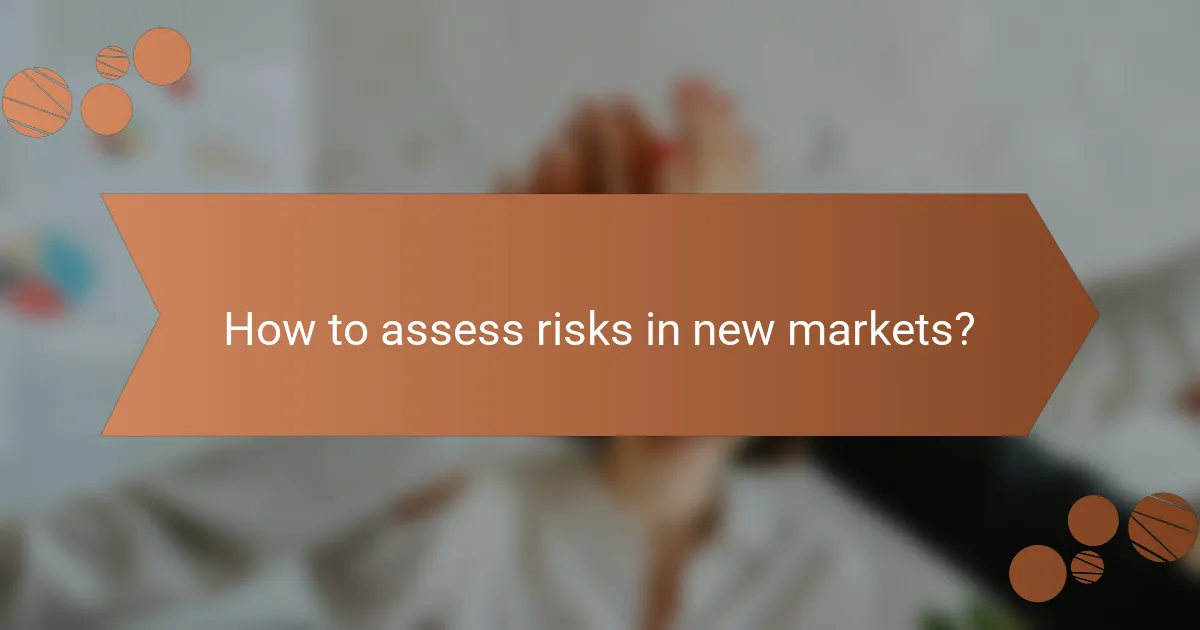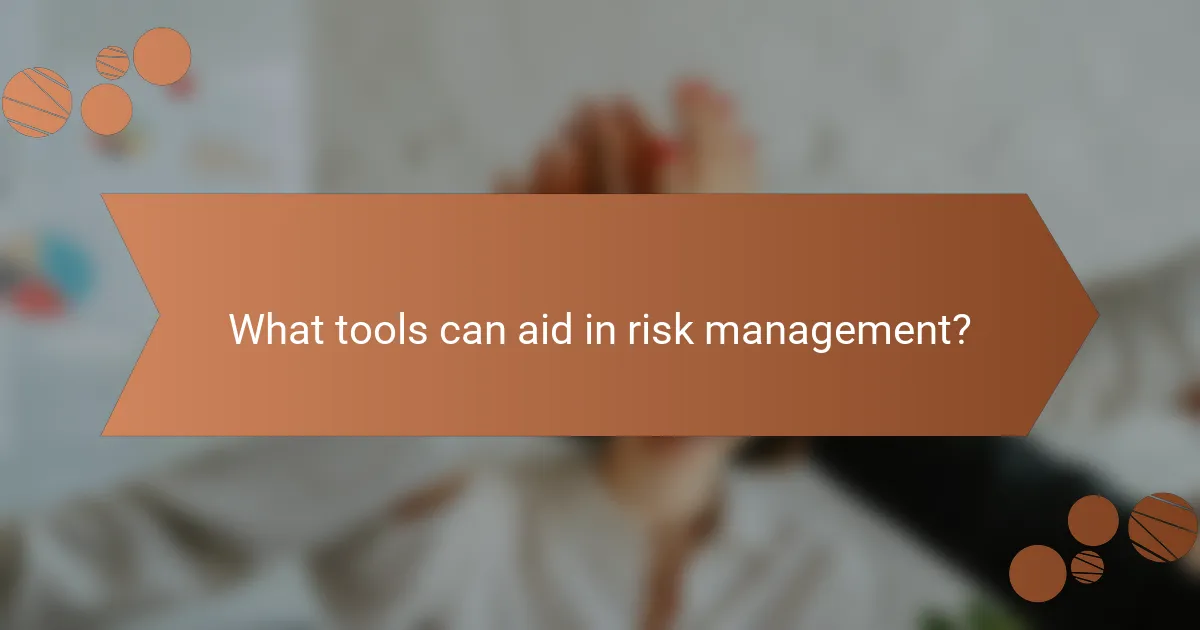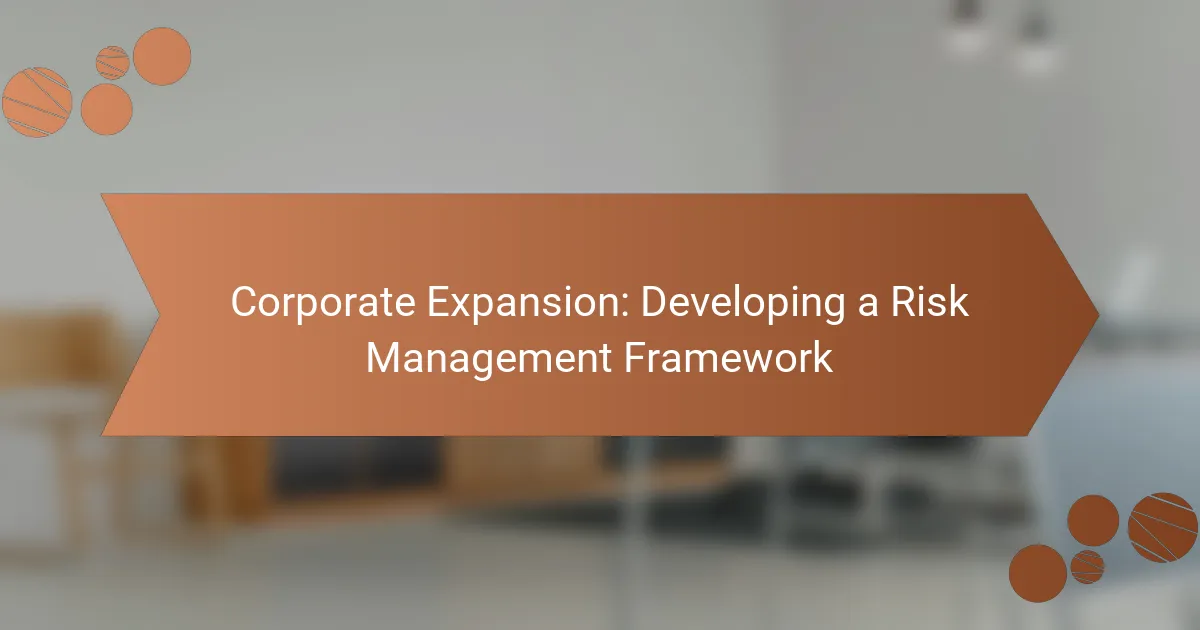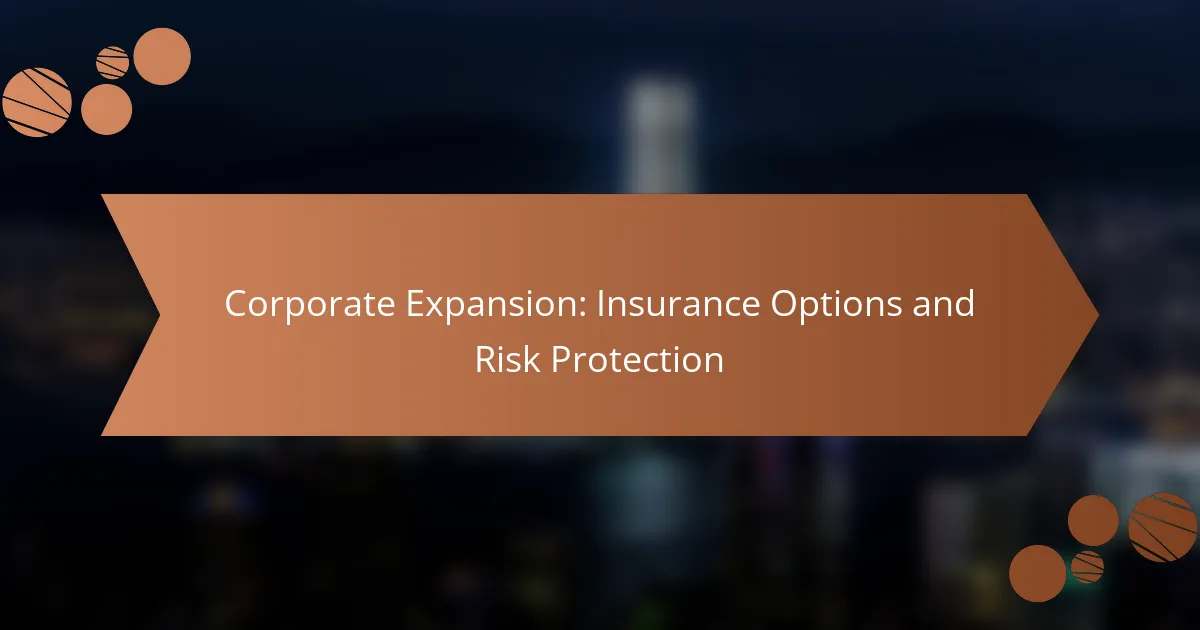In today’s dynamic business environment, developing a robust risk management framework is essential for organizations pursuing corporate expansion. By systematically identifying, assessing, and mitigating potential risks, companies can effectively navigate uncertainties and capitalize on growth opportunities. This structured approach not only enhances decision-making but also safeguards operations against unforeseen challenges in new markets.

How to develop a risk management framework for corporate expansion?
To develop a risk management framework for corporate expansion, organizations must systematically identify, assess, and mitigate potential risks. This structured approach ensures that businesses can navigate uncertainties while pursuing growth opportunities effectively.
Identify potential risks
Identifying potential risks involves recognizing various factors that could negatively impact corporate expansion. Common risks include market volatility, regulatory changes, operational challenges, and financial uncertainties. Conducting a thorough risk assessment can help pinpoint specific threats relevant to the new market or region.
Utilize tools like SWOT analysis (Strengths, Weaknesses, Opportunities, Threats) to categorize risks effectively. Engaging stakeholders from different departments can also provide diverse perspectives on potential risks that may not be immediately apparent.
Assess risk impact
Once risks are identified, assessing their impact is crucial for prioritization. Evaluate each risk based on its likelihood of occurrence and potential consequences on business objectives. A common method is to use a risk matrix, which helps categorize risks into low, medium, and high-impact groups.
For example, a regulatory change might have a high likelihood but a low impact, while a sudden market entry by a competitor could have a low likelihood but a high impact. Understanding these dynamics allows companies to allocate resources effectively to manage the most critical risks.
Implement risk mitigation strategies
Implementing risk mitigation strategies involves developing action plans to reduce the likelihood or impact of identified risks. Strategies can include diversifying supply chains, investing in insurance, or enhancing compliance measures. Each strategy should be tailored to the specific risk it addresses.
For instance, if market volatility is a concern, a company might consider hedging strategies or establishing flexible pricing models. Regular training and communication with employees can also enhance awareness and preparedness for potential risks.
Monitor and review risks
Monitoring and reviewing risks is an ongoing process that ensures the risk management framework remains effective. Establish key performance indicators (KPIs) to track the effectiveness of mitigation strategies and adjust them as necessary. Regular reviews can help identify new risks that may arise as the business evolves.
Consider conducting quarterly risk assessments and involving cross-functional teams to gather insights on emerging threats. This proactive approach allows companies to stay ahead of potential challenges and adapt their strategies accordingly.

What are the key components of a risk management framework?
A risk management framework consists of systematic processes and practices that organizations use to identify, assess, and respond to risks. Key components include risk identification, risk assessment methodologies, and risk response planning, which together help organizations mitigate potential threats to their operations.
Risk identification processes
Risk identification processes involve systematically recognizing potential risks that could impact an organization. This can be achieved through techniques such as brainstorming sessions, expert interviews, and SWOT analysis (Strengths, Weaknesses, Opportunities, Threats).
Organizations should consider both internal and external factors, including market trends, regulatory changes, and operational vulnerabilities. Regular reviews and updates of the risk register are essential to capture new risks as they emerge.
Risk assessment methodologies
Risk assessment methodologies help organizations evaluate the likelihood and impact of identified risks. Common approaches include qualitative assessments, which categorize risks based on their severity, and quantitative assessments, which use numerical data to estimate potential losses.
Organizations often employ tools like risk matrices to visualize risk levels and prioritize them accordingly. It’s important to balance thoroughness with efficiency; focusing on high-impact risks can be more beneficial than attempting to assess every possible risk.
Risk response planning
Risk response planning outlines strategies to address identified risks effectively. Common responses include risk avoidance, mitigation, transfer (such as insurance), and acceptance, depending on the organization’s risk appetite and resources.
When developing a response plan, organizations should consider the cost-effectiveness of each strategy and the potential impact on operations. Regularly revisiting and adjusting the plan ensures it remains relevant as the business environment evolves.

How to assess risks in new markets?
Assessing risks in new markets involves identifying potential challenges and uncertainties that could impact business operations. This process typically includes evaluating market conditions, competition, and regulatory requirements to make informed strategic decisions.
Market analysis techniques
Effective market analysis techniques include SWOT analysis, PESTLE analysis, and market segmentation. SWOT focuses on strengths, weaknesses, opportunities, and threats, while PESTLE examines political, economic, social, technological, legal, and environmental factors. Market segmentation helps identify specific customer groups and their needs.
Utilizing these techniques can help businesses understand market dynamics and identify potential risks. For example, a PESTLE analysis might reveal political instability in a region, signaling a higher risk for investment.
Competitive landscape evaluation
Evaluating the competitive landscape involves analyzing existing competitors, potential entrants, and substitute products. Understanding competitors’ strengths and weaknesses can highlight market gaps and inform strategic positioning. Tools like Porter’s Five Forces can be useful for this analysis.
For instance, if a market has few strong competitors, it may present a lower risk for new entrants. Conversely, a saturated market with aggressive pricing strategies could pose significant challenges.
Regulatory compliance checks
Conducting regulatory compliance checks is crucial when entering new markets, as different countries have varying laws and regulations. This includes understanding local labor laws, tax obligations, and industry-specific regulations that could affect operations.
Businesses should consult local legal experts to ensure compliance and avoid penalties. For example, entering the European market may require adherence to GDPR for data protection, which can significantly impact operational strategies.

What tools can aid in risk management?
Effective risk management relies on various tools that help identify, assess, and mitigate potential risks. Utilizing the right software and platforms can streamline processes and enhance decision-making.
Risk management software solutions
Risk management software provides organizations with the ability to track and analyze risks systematically. These tools often include features for risk assessment, reporting, and compliance tracking, making it easier to adhere to industry standards.
When selecting a risk management solution, consider factors such as user-friendliness, integration capabilities with existing systems, and scalability. Popular options include platforms like LogicManager, RiskWatch, and Resolver, which cater to different organizational needs.
Data analytics platforms
Data analytics platforms enable businesses to analyze large sets of data to identify trends and potential risks. By leveraging advanced analytics, companies can uncover insights that inform risk mitigation strategies.
Tools like Tableau, Power BI, and SAS provide visualization and reporting capabilities that help stakeholders understand risk exposure. When using these platforms, ensure that data sources are reliable and that the analytics align with your specific risk management objectives.
Project management tools
Project management tools facilitate the planning and execution of projects while incorporating risk management practices. These tools help teams identify risks associated with project timelines, budgets, and resource allocation.
Platforms such as Asana, Trello, and Microsoft Project allow teams to create risk registers and assign responsibilities for monitoring risks. It’s crucial to regularly update these tools to reflect any changes in project scope or risk status, ensuring that all team members are informed and aligned.

How to create a risk management team?
Creating a risk management team involves assembling a group of professionals dedicated to identifying, assessing, and mitigating risks within an organization. This team plays a crucial role in ensuring that potential threats to business operations are effectively managed.
Define team roles and responsibilities
Clearly defining roles and responsibilities is essential for a risk management team to function effectively. Each member should have specific duties, such as risk assessment, compliance monitoring, or incident response. This clarity helps streamline processes and ensures accountability.
Consider creating a structure that includes a risk manager, analysts, and compliance officers. This hierarchy allows for efficient communication and decision-making, which is vital in addressing risks promptly.
Recruit skilled professionals
Recruiting skilled professionals is critical for building a competent risk management team. Look for candidates with relevant experience in risk analysis, compliance, and industry-specific knowledge. Certifications such as Certified Risk Manager (CRM) or Project Management Professional (PMP) can indicate a strong background.
Utilize various recruitment channels, including job boards, professional networks, and industry conferences, to attract top talent. Offering competitive salaries and benefits can also help in securing skilled professionals.
Establish training programs
Establishing training programs is vital for keeping the risk management team updated on best practices and emerging threats. Regular training sessions can enhance skills in risk assessment methodologies, regulatory compliance, and crisis management.
Consider implementing a mix of in-house training and external workshops. This approach allows team members to learn from experts and share knowledge with each other, fostering a culture of continuous improvement in risk management practices.

What are the best practices for risk communication?
Effective risk communication involves clearly conveying potential risks and their implications to stakeholders. Best practices include developing a structured communication plan and actively utilizing feedback from stakeholders to refine messaging.
Develop a communication plan
A robust communication plan outlines how risk information will be shared with stakeholders. It should specify the target audience, key messages, communication channels, and frequency of updates. For example, using email for formal notifications and social media for real-time updates can enhance reach.
When creating the plan, consider the complexity of the risks involved and the level of detail required by different audiences. Tailoring the content to match the knowledge and interests of stakeholders ensures better understanding and engagement.
Utilize stakeholder feedback
Incorporating stakeholder feedback into risk communication is crucial for improving clarity and effectiveness. Regularly solicit input through surveys, focus groups, or informal discussions to gauge understanding and address concerns. This two-way communication fosters trust and collaboration.
Act on the feedback received to refine messaging and adjust the communication strategy as necessary. For instance, if stakeholders express confusion about specific risks, providing additional resources or clarifying explanations can enhance overall comprehension and support informed decision-making.



